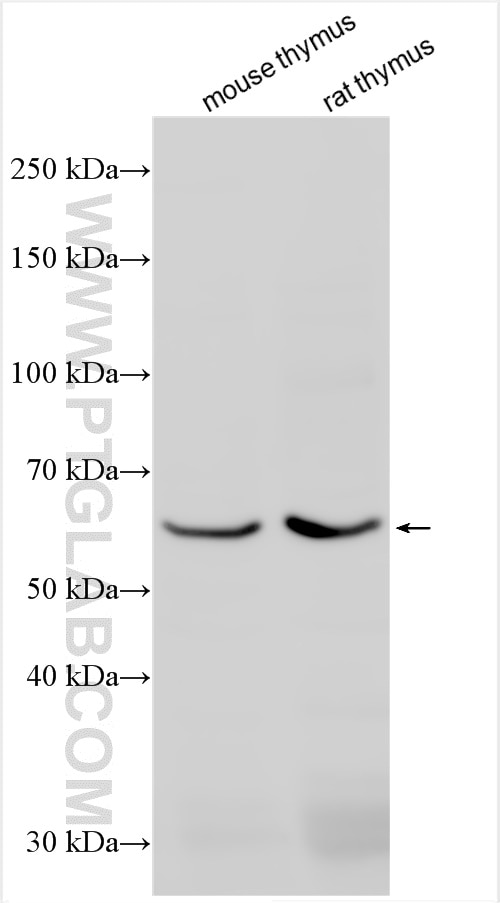Tested Applications
| Positive WB detected in | mouse thymus tissue, rat thymus tissue |
Recommended dilution
| Application | Dilution |
|---|---|
| Western Blot (WB) | WB : 1:500-1:3000 |
| It is recommended that this reagent should be titrated in each testing system to obtain optimal results. | |
| Sample-dependent, Check data in validation data gallery. | |
Published Applications
| WB | See 1 publications below |
Product Information
20866-1-AP targets SLC15A3 in WB, ELISA applications and shows reactivity with human, mouse, rat samples.
| Tested Reactivity | human, mouse, rat |
| Cited Reactivity | human |
| Host / Isotype | Rabbit / IgG |
| Class | Polyclonal |
| Type | Antibody |
| Immunogen | SLC15A3 fusion protein Ag14915 Predict reactive species |
| Full Name | solute carrier family 15, member 3 |
| Calculated Molecular Weight | 581 aa, 64 kDa |
| Observed Molecular Weight | 64 kDa |
| GenBank Accession Number | BC037974 |
| Gene Symbol | SLC15A3 |
| Gene ID (NCBI) | 51296 |
| RRID | AB_2935450 |
| Conjugate | Unconjugated |
| Form | Liquid |
| Purification Method | Antigen affinity purification |
| UNIPROT ID | Q8IY34 |
| Storage Buffer | PBS with 0.02% sodium azide and 50% glycerol , pH 7.3 |
| Storage Conditions | Store at -20°C. Stable for one year after shipment. Aliquoting is unnecessary for -20oC storage. 20ul sizes contain 0.1% BSA. |
Background Information
Solute carrier family 15 member 3 (SLC15A3) is a proton-coupled amino-acid transporter, which transports free histidine and certain di- and tripeptides, and is involved in the innate immune response. It can transport carnosine as well (PMID:31073693). SLC15A3 has a calculated molecular weight of 64 kDa.
Protocols
| Product Specific Protocols | |
|---|---|
| WB protocol for SLC15A3 antibody 20866-1-AP | Download protocol |
| Standard Protocols | |
|---|---|
| Click here to view our Standard Protocols |
Publications
| Species | Application | Title |
|---|---|---|
bioRxiv Glycosaminoglycan-mediated lipoprotein uptake protects cancer cells from ferroptosis |



